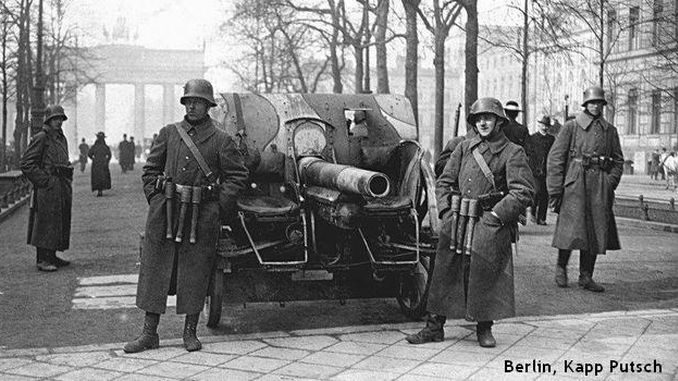
Weimar Republic
This chapter if about the first German republic, named after the city of Weimar where the national assembly met in 1919, to decide about a constitution and to form a new government. However, the young Weimar Republican had to struggle from its start.




